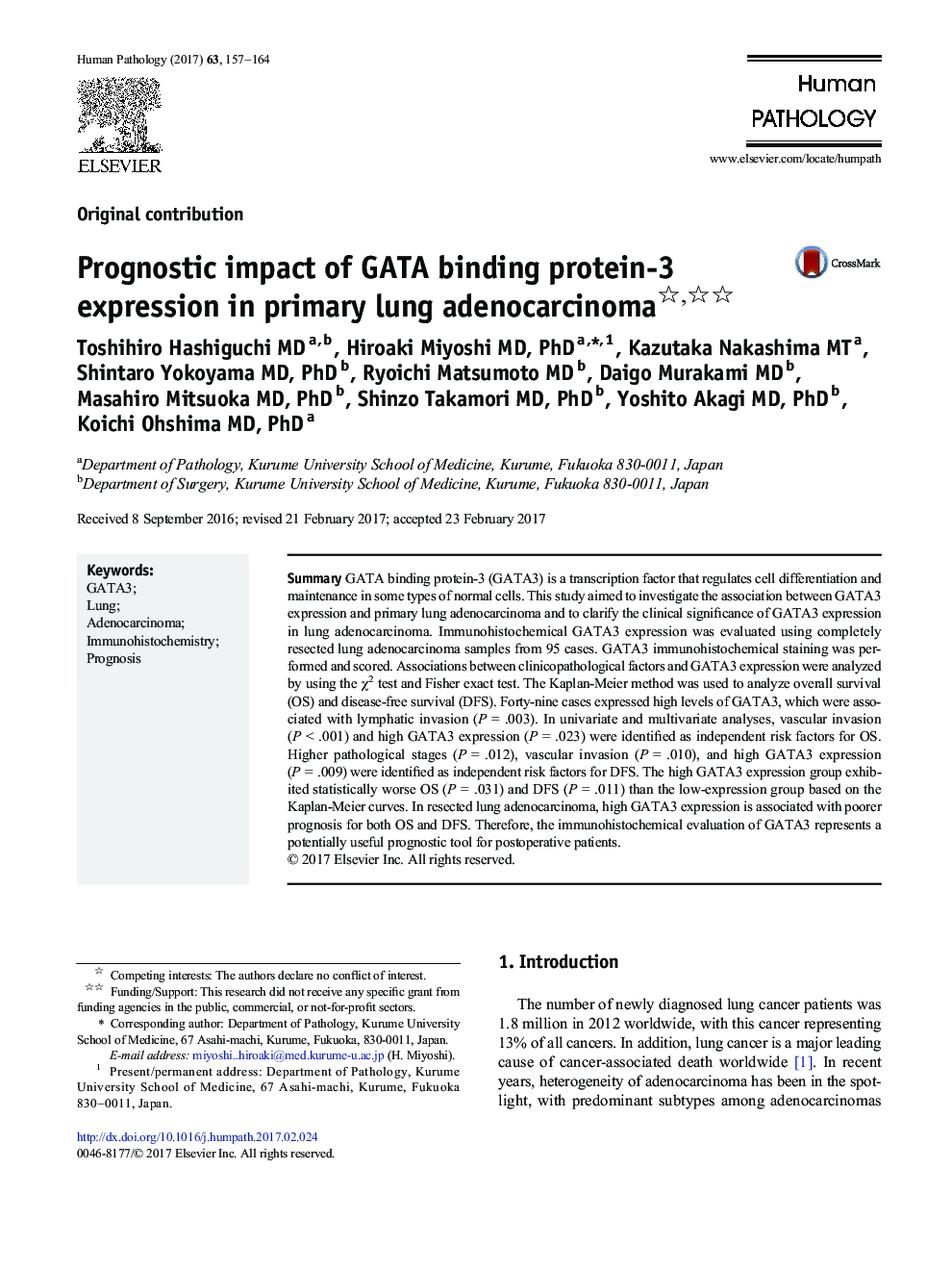| Article ID | Journal | Published Year | Pages | File Type |
|---|---|---|---|---|
| 5716401 | Human Pathology | 2017 | 8 Pages |
â¢We reviewed GATA binding protein-3 (GATA3) expression in lung adenocarcinoma cases.â¢High GATA3 expression contributed to poor survival and recurrence.â¢GATA3 could be a potential poorer prognostic marker for postoperative patients.
SummaryGATA binding protein-3 (GATA3) is a transcription factor that regulates cell differentiation and maintenance in some types of normal cells. This study aimed to investigate the association between GATA3 expression and primary lung adenocarcinoma and to clarify the clinical significance of GATA3 expression in lung adenocarcinoma. Immunohistochemical GATA3 expression was evaluated using completely resected lung adenocarcinoma samples from 95 cases. GATA3 immunohistochemical staining was performed and scored. Associations between clinicopathological factors and GATA3 expression were analyzed by using the Ï2 test and Fisher exact test. The Kaplan-Meier method was used to analyze overall survival (OS) and disease-free survival (DFS). Forty-nine cases expressed high levels of GATA3, which were associated with lymphatic invasion (PÂ =Â .003). In univariate and multivariate analyses, vascular invasion (PÂ <Â .001) and high GATA3 expression (PÂ =Â .023) were identified as independent risk factors for OS. Higher pathological stages (PÂ =Â .012), vascular invasion (PÂ =Â .010), and high GATA3 expression (PÂ =Â .009) were identified as independent risk factors for DFS. The high GATA3 expression group exhibited statistically worse OS (PÂ =Â .031) and DFS (PÂ =Â .011) than the low-expression group based on the Kaplan-Meier curves. In resected lung adenocarcinoma, high GATA3 expression is associated with poorer prognosis for both OS and DFS. Therefore, the immunohistochemical evaluation of GATA3 represents a potentially useful prognostic tool for postoperative patients.
